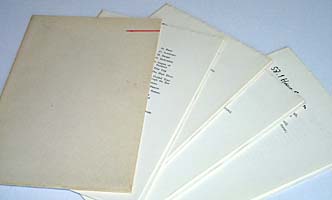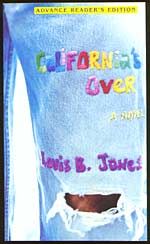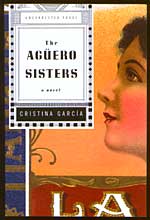Collecting First Editions
Book collectors have to learn a trade jargon that is made extra difficult by two facts: first, it comes from several related, but different, trades -- publishing, printing, and writing as well as bookselling and collecting itself -- and, second, many of the terms are commonplace words with normal meanings outside of the book collecting world, but which have specific meanings, including specific connotations, within book collecting. Mastering, or at least getting comfortable with, this jargon is an important hurdle for a collector. In modern first edition collecting, a small number of these terms show up repeatedly. In a few cases, they are variably, and imprecisely used. We will focus on a few of these terms to sort them out; having some idea of the range of a term's meanings will help a collector at least ask the right questions to determine what exactly is meant in a given case by a particular term.
The standard "Bible" of book collecting terminology is John Carter's ABC for Book Collectors (the sixth edition is available from Oak Knoll Books, the fifth from Spoon River Press). It's a 200+ page dictionary and an invaluable reference. Many of its definitions, however, pertain to early printing and binding and are not relevant to modern books, per se. The best, most succinct, single-source glossary of book-related terms, especially for modern book collecting, is a 16-page glossary at the back of Allen Ahearn's Book Collecting: A Comprehensive Guide (New York: Putnam, 1989). The introductory material, some 60 pages, is also the best single introduction to the many aspects of book collecting -- again with an emphasis on the modern -- that I have seen. Since it is also a price guide to authors' first books, there are many reasons a collector should own this book; the introductory material, however, is worth the cost of the book all by itself.
That said, there are certain terms that modern book collectors run into frequently which may be obscure or ambiguous: proofs, galleys, advance reading copy, advance review copy, wrappers, rectos, versos, signatures, quarto, broadside, TLS, ALS, manuscript/typescript, ribbon copy, carbon copy, photocopy, holograph. Not all of these have universally agreed-upon meanings; I will try to identify those that don't so that a collector may know when not to assume that another dealer means the same thing that I would mean, and can ask. Some of these terms are so widely used that the fact that they are imprecisely, or differently, used often escapes notice, even by the people using them.
Several terms pertain to prepublication copies of books, including:
Galleys - Galley proofs, or galleys, are long sheets taken directly from the printer's tray. They generally contain about three pages' worth of type, and are printed on one side only. Only a few copies of the galleys are pulled, for use by the author for final corrections and for the publisher's in-house use. They are an early state and exceptionally scarce. One thing to watch out for: some publishers, sales reps, and even book dealers, will use "galleys" interchangeably with "proofs" (see below). If someone says "galleys," find out: do they actually mean long galley sheets, which are exceptionally rare, or just proofs, which are considerably more common?
"f & g's" (folded and gathered sheets) - The gatherings, or signatures, of the finished book, but unbound, loosely laid together, sometimes laid into a dust jacket or proof dust jacket. An intermediate state between the proof and the finished, bound book; usually only a handful of such sets are pulled from the production process, for in-house use or distribution.
 |
| "f & g's" (above); Pad-bound wrappers (below) |
 |
Pad-bound wrappers - Covers and spine are separate pieces, as in a pad of paper. Front and rear covers are usually card-stock, spine usually a mesh of some sort or just plain glue. A fragile form, as the front and rear covers adhere to the book only with a thin strip of glue at the junction with the spine.
Bound manuscript - Generally identical to a proof copy with the exception that the pages appear to be direct reproductions of the author's manuscript, reduced in size, rather than being typeset. Sometimes they are issued in advance of more polished proofs, other times they are done instead of a more finished prepublication edition. In contemporary publishing, most books do not go through this stage, and many do not go through the following one, either:
Proofs - Generally a plainly printed softbound copy of a book, issued well in advance of publication, for early readers: writers from whom "blurbs" are solicited; buyers for major bookstores, chains or wholesalers; reviewers for magazines and, sometimes, newspapers. Pagination often differs from the final book; page numbers are sometimes not typeset; often the publisher staples or tapes publication information or promotional material to the front cover or inside the front cover. Sometimes there are considerable textual changes between the proofs of a book and the final published version. Carter distinguishes between "first proofs and "revised proofs" but this is not a general practice of the U.S. publishing industry, except to the extent that "galleys" are done.
 |
 |
| Uncorrected Proof copies (above) vs. Advance Reading copies (below) | |
 |
 |
Advance reading copy - This denotes a prepublication softcover copy which generally has glossy covers, finished artwork and a visual appeal well beyond that of proof copies. They are used for promotional purposes primarily, given away at publishers' book fairs, and so forth. They are not to be confused with:
Advance review copy or just review copy - This is a regular copy of the book -- the finished, published book, complete with hardcovers -- into which the publisher has inserted some ephemeral promotional material. It can be as little as a slip giving the date of publication or can include such things as an author photograph (or other photographs), biographical material about the author, blurbs and early comments on the book, comments on the author's earlier works, etc. The range of possible material is vast but the important thing is to recognize that "advance review copy" means a copy of the published edition (the "trade edition," see below) with extra material laid in, whereas "advance reading copy" indicates a special edition, generally softcover, which was never formally published or offered for sale -- a completely different item than a "review copy."
Salesman's Dummy - A hardcover copy bound to look like a finished book, but with only a few sample pages printed, the rest being blank.
Trade edition - The regularly published edition of the book, i.e., the edition released "to the book trade" at large. This term is to differentiate the edition from any limited edition that may have been done, book club edition(s), prepublication editions (proofs, galleys, etc.), special subscribers' editions, and so forth. The trade edition is the "regular" edition of a book.
Wrappers - Paper covers. A book described as being "in wrappers" is a paperback. Sometimes called "paperwrappers," "paperwraps," or just, for brevity, "wraps."
Rectos - The front of a page, or the right-hand page of an open book. In modern book collecting, this generally comes up when describing galley proofs or, sometimes, manuscripts or bound manuscripts.
Verso - The other side of the recto, or the left-hand page of an open book.
Signatures - Books are assembled by printing a number of pages onto a large sheet, which is then folded and cut to make a "gathering" of pages. "Gatherings" can be as little as four pages -- i.e., a sheet folded once and printed on both sides to make four pages; or, more usually, they consist of a larger number of pages, which are sewn together at the binder. The "signature" is the binder's identifying mark on each gathering, and the term has also come to be used as a synonym for the "gathering" itself.
Quarto - A descriptive term with its origins in the early technology of printing and binding, it now refers generically to the size of a book. According to Carter, a "folio" is a "large, upright-shaped volume," an "octavo" (also written "8vo" in some catalogues) is "a small, upright-shaped volume," and a quarto is between them in size, and "essentially squarish in shape." For practical purposes, most modern first editions are "octavos" -- i.e., what we think of as "normal" size for a book. Large coffee-table books, books of photography or art, etc., are quartos or folios.
Broadside - A single sheet of paper, printed on one-side only, like a poster or art print. Many broadsides are published as fine-press limited editions; others, more ephemeral, come into existence as handbills or flyers.
TLS, ALS - "Typed Letter Signed" and "Autograph Letter Signed." Other similar terms include "TPC" and "APC," referring to post cards. An "autograph letter signed" is assumed to be all in the author's hand unless identified otherwise (e.g., in a secretarial hand).
Manuscript/typescript - While these should be fairly obvious -- manuscript meaning, literally, "hand-written" and typescript indicating "type-written" -- their usage is much more ambiguous. They are often used interchangeably (see above, "bound manuscript" -- which actually refers to a bound, photo-reduced "typescript"). A hand-written manuscript, these days, is specified as a "holograph manuscript." Otherwise, if context doesn't provide a clear indication, manuscript and typescript should be assumed to be the same thing. The changing technology of writing -- with the prevalence of computers and word processors -- has changed the nature of manuscripts and typescripts and complicated the process of identifying them and determining their relative scarcity. Computer print-outs and xerox copies of typescripts can both be generated in the course of the production of a book. A typescript or manuscript can be assumed to be either unique, or one of a very small number of copies (either corresponding to "drafts" of a work or to "carbons" of the typescript); computer print-outs or xeroxes of typescripts, by contrast, can easily exist in quantities reaching into the dozens or much higher. A great difference in value should be assumed between a typescript and a xerox of a typescript.
Ribbon-copy and carbon copy - These refer to typewritten manuscripts only. The technology of reproduction by carbon paper effectively limits the number of copies of a typescript, and these terms refer only to which was the top copy in the typewriter, and which underneath a sheet of carbon paper. The "ribbon copy" is assumed to be the more desirable of the two, although both are extremely scarce.
Photocopy - Everyone knows what a photocopy is; for a book collector, the important thing to know is "how scarce is it?" The answer is that there is no way to know, except when the photocopy is accompanied by some original material, such as a cover letter, which identifies this particular photocopy as being of a particular provenance.
Provenance - Ahearn says this is the "record of the previous ownership of a particular copy of a book." That is as succinct and clear as it can get. The only thing to add is that sometimes the same item with good, clear provenance is worth considerably more than a copy without such provenance. An example would be the kind of computer-generated typescripts referred to above.
Holograph - Used as an adjective in the book world, this means "written in the hand of the author," referring to documents, notes, and manuscripts (as opposed to "autograph," which is, for some reason, used for letters -- e.g., "ALS").
The list of terms that can appear in a dealer's catalogue is not quite endless, but almost. Some that I haven't mentioned here, such as "mimeograph," can be of crucial importance in a particular area of collecting -- such as screenplays. The important thing to remember is to ask: find out what a dealer means if there is even the slightest doubt. Most book dealers are like most other professionals, and love talking about their field. You may get a lot more of an answer than you were looking for, but at least you'll find out. And with book collecting, the more you look into the jargon, the more your vision begins to stretch out: backward in time -- to the terms and technologies of the first printers -- and outward through the present -- to the technologies being used by printers, writers, and even filmmakers today. More of the world, and some of the most interesting and fascinating aspects of the world, come into view as you pursue your own book collecting.
Copyright © 1993 by Ken Lopez